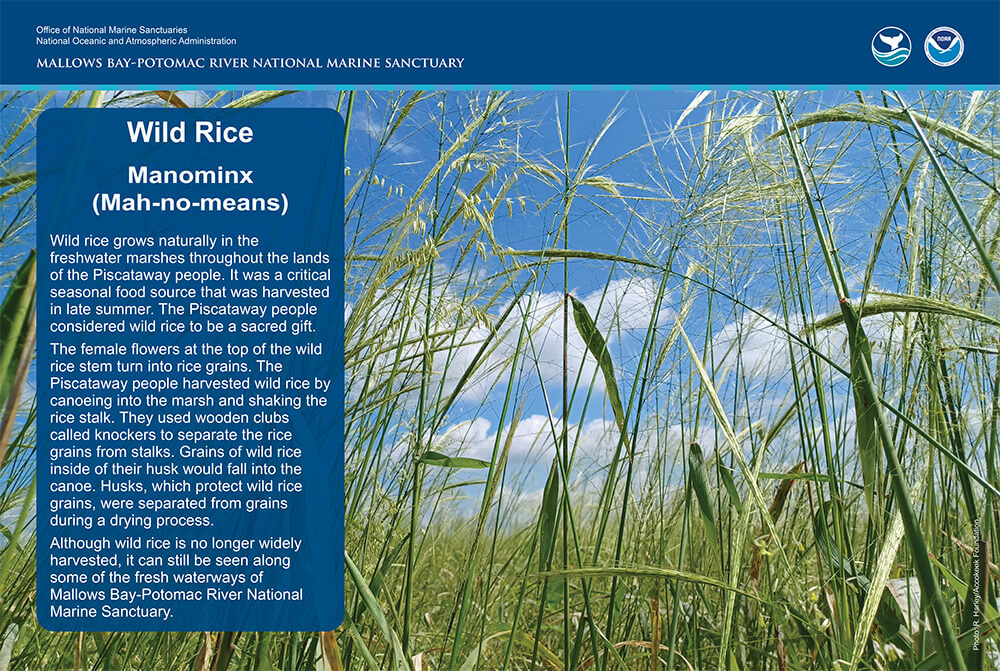Wild Rice – Manominx - (Mah-no-means)

Wild rice grows naturally in the freshwater marshes throughout the lands of the Piscataway people. It was a critical seasonal food source that was harvested in late summer. The Piscataway people considered wild rice to be a sacred gift.
The female flowers at the top of the wild rice stem turn into rice grains. The Piscataway people harvested wild rice by canoeing into the marsh and shaking the rice stalk. They used wooden clubs called knockers to separate the rice grains from stalks. Grains of wild rice inside of their husk would fall into the canoe. Husks, which protect wild rice grains, were separated from grains during a drying process.
Although wild rice is no longer widely harvested, it can still be seen along some of the fresh waterways of Mallows Bay- Potomac River National Marine Sanctuary.
Photo: R. Harley/Accokeek Foundation
A Further Piscataway Perspective
Wild Rice grows naturally in the freshwater marshes throughout our homeland. It was a critical seasonal food source for our ancestors to harvest in late summer. For this reason, we the Piscataway people considered Wild Rice to be a sacred gift from the Creator.
Our ancestors harvested Wild Rice by canoeing into the marshes, gently bending the tops of ripe stalks over the canoes, and using sticks called knockers to separate the seeds from the stalks; this was known as “knocking the rice”.
When the canoes returned from harvesting the rice, woven cattail mats were spread upon the ground and the rice seeds were spread on the mats to be dried by the air and sun. Over the next couple of days, the rice would be sifted and re-spread to ensure it was properly dried. Once the rice was sufficiently dried it would either be cooked for eating or stored in large clay pots for later consumption.
Wild Rice is also food for many animals such as ducks, egrets, herons, racoons, and muskrats.
Wild Rice at Mallows Bay Park
Val Proctor (Piscataway), Stewardship Coordinator, Accokeek Foundation at Piscataway Park, discusses wild rice growth at Mallows Bay Park and use by the Piscataway People. Credit: National Marine Sanctuary Foundation, Accokeek Foundation, NOAA.

